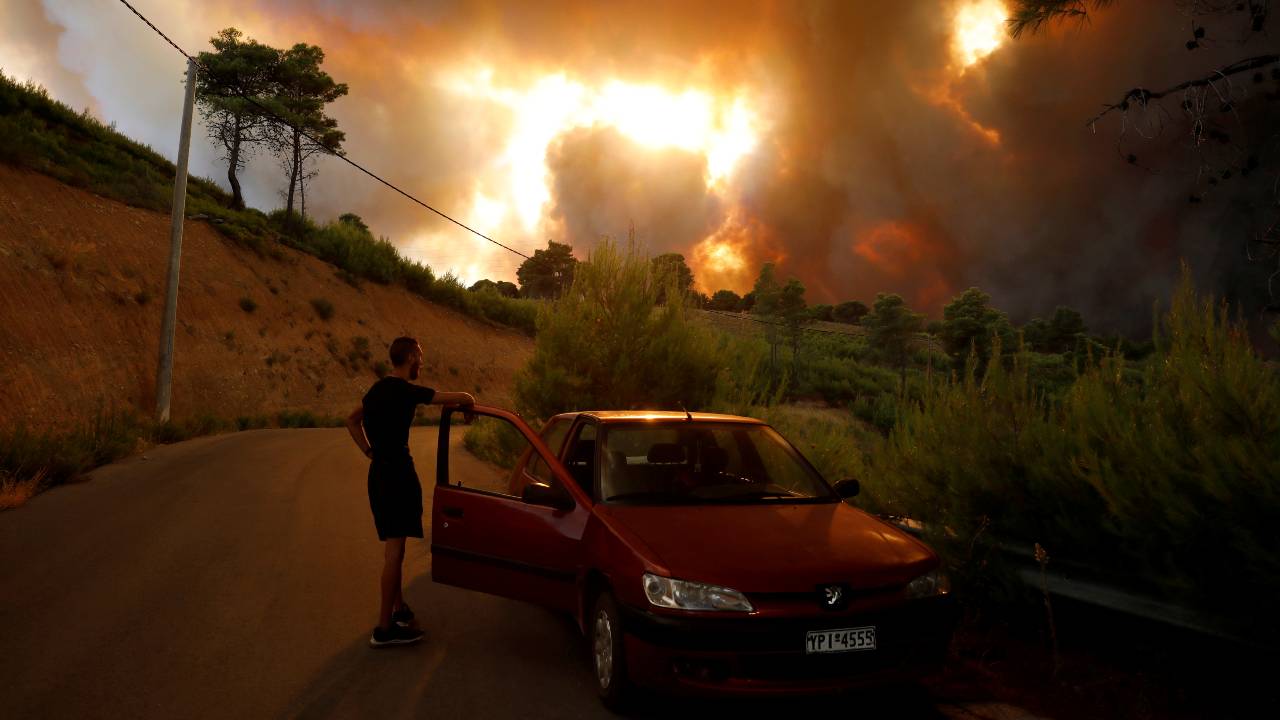
A man looks towards a wildfire burning a forest area north of Athens, Greece. /Costas Baltas/Reuters
A man looks towards a wildfire burning a forest area north of Athens, Greece. /Costas Baltas/Reuters
Floods, droughts and wildfires: these are just some of the effects of the climate crisis Europeans will have to get used to in the coming years, according to top scientists.
The Intergovernmental Panel on Climate Change (IPCC) report published on Monday was global in scope, but also had specific warnings for each region around the world.
The specialists say that unless there is an "immediate, rapid, and large-scale" reduction in greenhouse gas emissions, the window to limit global warming will soon "be beyond reach."
But as Europe's recent deadly wildfires and floods show, some regions are more at threat than others.
For better or worse, the IPPC's new projections and advanced climate modeling give us a window into the conditions Europeans could face if emissions aren't quickly reduced. Here's what they tell us about the climate crisis in Europe and where the continent is headed.
READ MORE:
'Code red': Irreversible climate change from human activity – report
What you need to know about the IPCC's climate report
UN releases landmark climate report
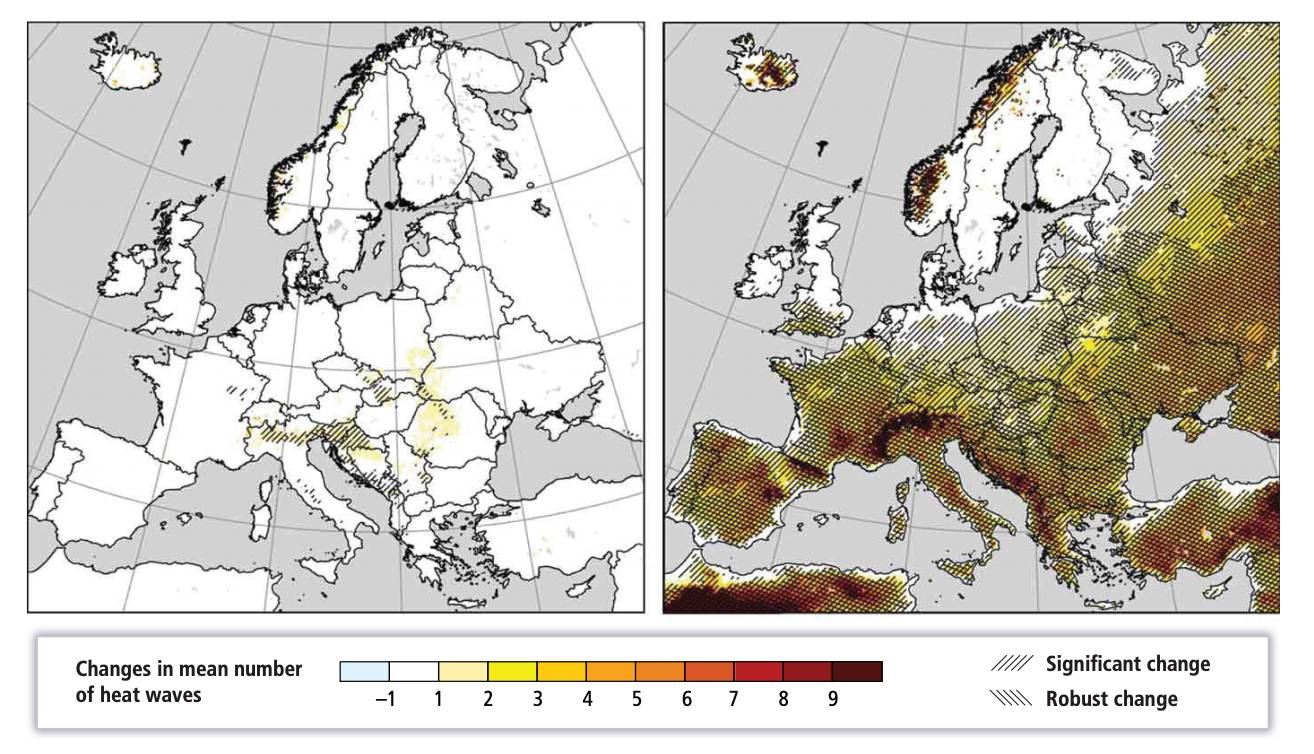
Changes in the mean number of heatwaves in Europe comparing 1971-2000 with 2071-2100. /IPCC's AR6 Climate Change Report 2021
Changes in the mean number of heatwaves in Europe comparing 1971-2000 with 2071-2100. /IPCC's AR6 Climate Change Report 2021
More heatwaves and wildfires
No matter what the future levels of global warming are, scientists are highly confident temperatures will continue to rise in all European areas faster than the global average.
This has already been the case throughout the continent in recent decades, the report says, with the frequency and intensity of hot extremes going up significantly.
In the likely scenario that temperatures increase by 2 degrees Celsius, scientists say "the critical thresholds" for human health and their ecosystems in Europe will regularly be exceeded.
The authors are "highly confident" that such increases will occur along the Mediterranean, the area that stands to lose the most economically from climate change compared with any other region in Europe.
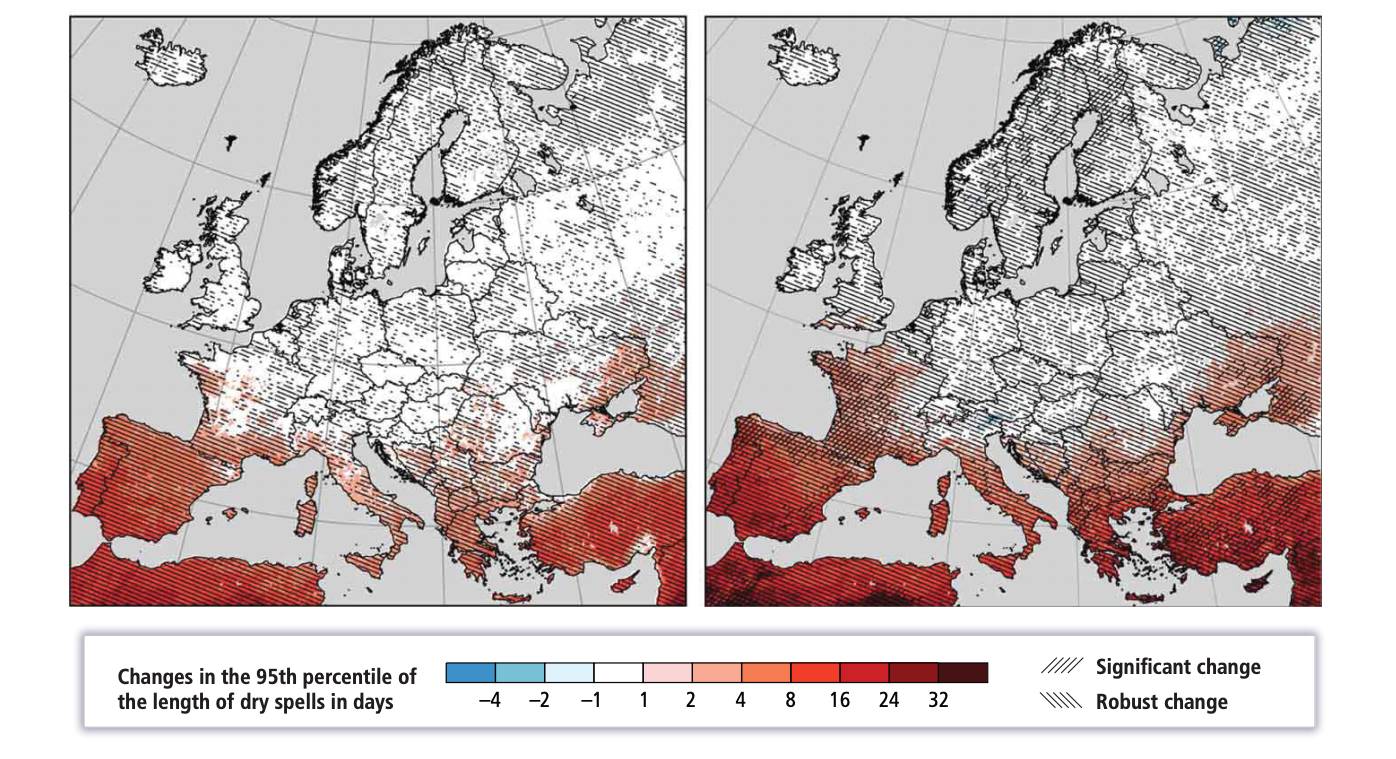
Changes in the 95h percentile of the length of dry spells (days) between 1971-2000 compared with 2071-2100. /IPCC's AR6 Climate Change Report 2021
Changes in the 95h percentile of the length of dry spells (days) between 1971-2000 compared with 2071-2100. /IPCC's AR6 Climate Change Report 2021
Acute global warming will bring more frequent temperature extremes and droughts, as well as less rain in the South. That means perfect conditions for wildfires like those recently experienced in Greece and Italy.
However, Eastern Europe is also set to experience more wildfires, while people in Central and Western Europe will likely encounter more hydrological, agricultural and ecological droughts as scientists predict mid-century warming levels to exceed 2 degrees Celsius in these regions.
The report stresses that the majority of Europe's climatic changes have been "unequivocally caused by human activities."
Therefore, it's no surprise that heavily built-up urban areas with high pollution levels will be hit hard by the "more frequent occurrence of extreme climate events, such as heatwaves."
WATCH: Hundreds more evacuated as wildfires rage on Greek island of Evia
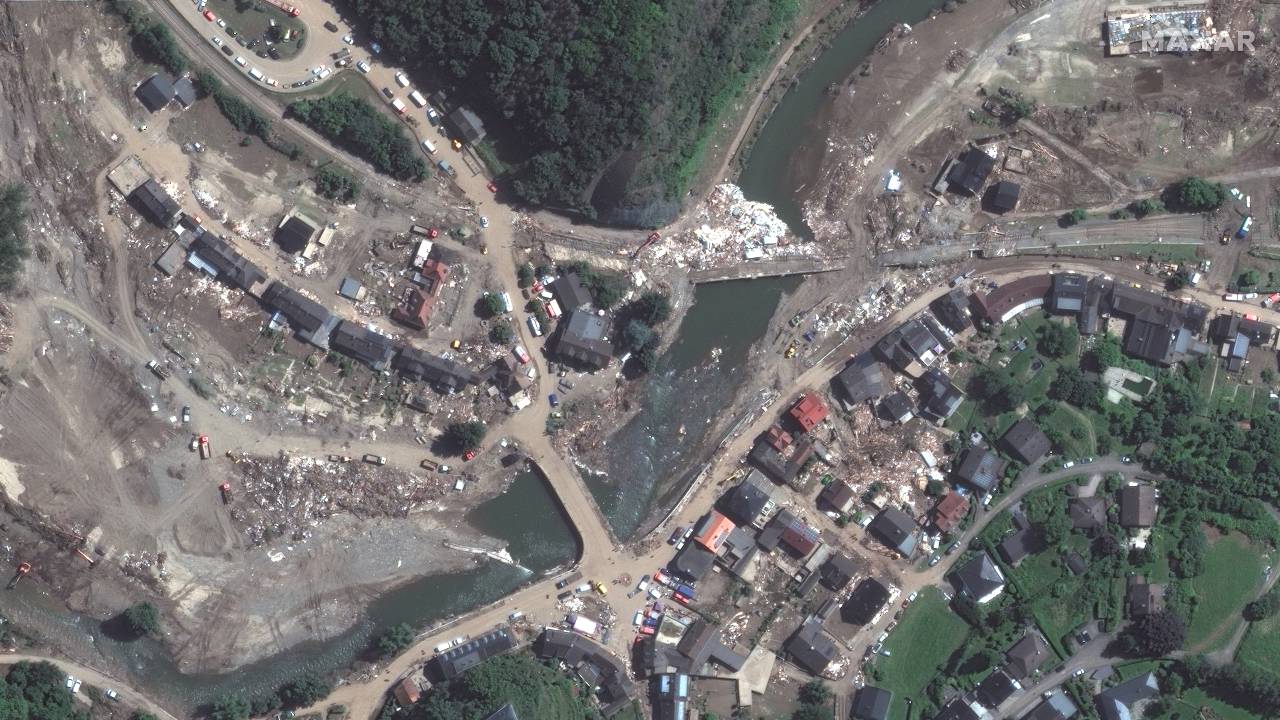
Satellite view shows Kreuzberg after flooding due to heavy rainfall in Germany. /Maxar Technologies/Handout via Reuters.
Satellite view shows Kreuzberg after flooding due to heavy rainfall in Germany. /Maxar Technologies/Handout via Reuters.
Strong chance of increased flooding
While the recent extreme weather in Germany and Belgium didn't make it into the report, the IPCC predicts there will be much more flooding in all European regions except the Mediterranean, even at the lowest expected levels of global warming. Essentially, expect there to be more rain in the North and less in the South.
Western and Central Europe in particular are set for an increase in river flooding, while in Northern Europe, the report's authors directly link an increased frequency of flooding caused by heavy rain to "human influence."
"The report finds strengthened evidence that human-caused warming of climate is intensifying the global water cycle, including its variability and the severity of very wet and very dry weather," said Richard Allan, the lead author on water cycle changes.
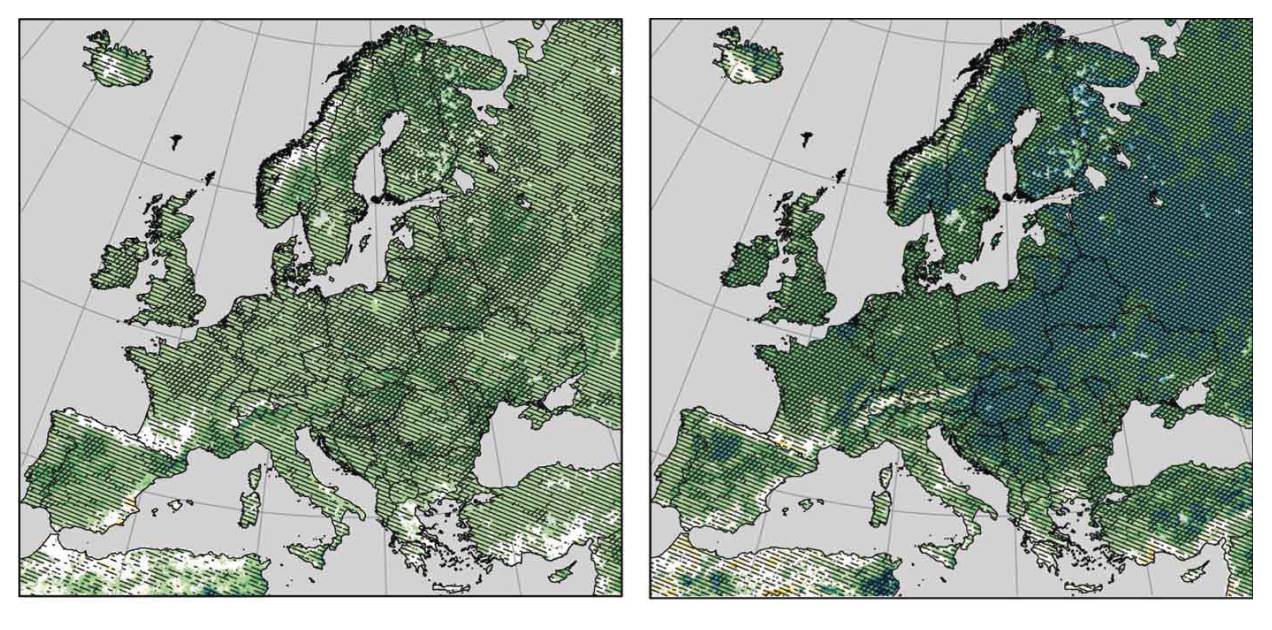
Seasonal changes in heavy precipitation (%) between 1971-2000 compared with 2071- 2100. /IPCC's AR6 Climate Change Report 2021
Seasonal changes in heavy precipitation (%) between 1971-2000 compared with 2071- 2100. /IPCC's AR6 Climate Change Report 2021
The report added: "Increases in extreme rainfall are projected to further increase coastal and river flood risk in Europe and, without adaptive measures, will substantially increase flood damage."
It also highlights "the significant impacts" of the increased rate of such extreme weather events on multiple European economic sectors, stating that direct economic river flood damage in Europe has increased over recent decades, mainly due to the development of infrastructure in flood zones.
And despite the increased risk of flooding, Western and Central Europe are also expected to experience the worst of both worlds, with more droughts as global warming hits 2 degrees Celsius.
READ MORE: Germany begins clean-up after devastation of Bavaria's floods
Rising sea levels, melting glaciers
Sea levels are set to rise in all European areas, with the exception of the Baltic Sea, faster or equal to the global average. These changes are projected to continue beyond the year 2100, with extreme sea level events becoming more frequent and intense.
The report says this will lead to more coastal flooding and shorelines along sandy coastlines retreating throughout this century, which could mean many European beaches disappearing.
Consequently, European cultural heritage, including buildings, local industries, landscapes and iconic sites will likely be damaged by rising sea levels and, in some cases, lost forever.
"Coastal areas affected by storm surges will face increased risk both because of the increasing frequency of storms and because of higher sea level," says the report, highlighting the northwestern European countries such as the Netherlands, Germany, France, Belgium, and Denmark as being particularly at risk around 2050.

A child looks on as water floods through a fence in Wessem in the Netherlands. /Eva Plevier/Reuters.
A child looks on as water floods through a fence in Wessem in the Netherlands. /Eva Plevier/Reuters.
Spain and Italy will also need to strengthen their coastal defenses and if such measures cannot significantly reduce the impacts of continually rising sea levels, a "managed retreat" is likely to become a necessary response in some areas.
Meanwhile, Europe will also experience fewer cold days than before, meaning its glaciers, permafrost and snow cover will continue to melt, leading to ever-rising sea levels.
But despite the gloom, the IPCC is relatively encouraging about Europe's ability to respond to the climate crisis, describing its "capacity to adapt" as "high compared with other world regions." This is in part thanks to the international cooperation of much of the continent under the banner of the European Union.
However, the report highlights the "important differences in impacts and in the capacity to respond between and within the European sub-regions." Essentially, European cooperation will be key.

